Tilston
The town of Tilston has two grain elevators. One is an ex Lake of the Woods elevator which became a Manitoba Pool elevator, and the other is an original Manitoba Pool elevator. Both have a lot of character!
Let's look at the Pool elevator first.
As you can see it still has its Pool logo, a rarity. This was the "A" elevator, indicating that there was more than one Pool elevator in the town at one time.
The elevator has no annex, but instead a low warehouse attached to it. To me this indicates it is pretty old, and the fact that it isn't clad in metal also indicates its age. Speaking of age...
This building has seen better days.
Like many older Pool elevators, this elevator proudly announces its affiliation.
"TILSTON / Co-Operative Elevator Association / POOL NO. 61 / Service At Cost"
What a lovely old elevator.
I should point out that whenever I was walking between the two elevators, I was being harassed by an angry bird. I assume I was walking near its nest. The bird was constantly yakking at me and swooping near my head, which was a little unnerving. I tried not to linger in the area!
Now let's talk about the Five Roses Flour / Lake of the Woods elevator.
As you can see it has FIVE ROSES FLOUR on its side, indicating that it was initially owned by Lake of the Woods. You can still buy Five Roses flour, although it's made by Smuckers now.
Notice the lettering above the FIVE.
My twelve-year-old self can't help but notice "P O O" but of course it was for the Manitoba Pool. The Lake of the Woods company built it in 1949 and sold it to the Pool in 1959 when it became the Pool B elevator.
Note the cell phone antenna on top of the elevator.
Here's a track side view.. if there were still tracks here. The CP Alida subdivision used to serve this town but it was abandoned in 1978.
I had a look through the window into the office of this elevator. It looks pretty well preserved.
The door to the driveway had the ubiquitous "NO SMOKING" sign on it. It looks like I wasn't the only one to shoot this sign.
I spent almost an hour wandering around the elevators and around town. It's such a lovely place. Here are a few scenes from the main street.
Note the friendly dog! She followed me around and was quite happy to have her tummy rubbed.
Lots of stuff on the community bulletin board!
A typical Prairie town.
Many Prairie towns have old homecoming signs still up.
On my way out of town, I noticed this old house.. a bit of a "fixer upper".
I hope you've enjoyed this Tilston tour. Here's a great article on the Tilston elevators.
In part 8 we will jump back into the timeline and continue on to Hartney, Hathaway and beyond, and see a couple of old pieces of rolling stock and solve the mystery of the missing grain elevator. Read on!
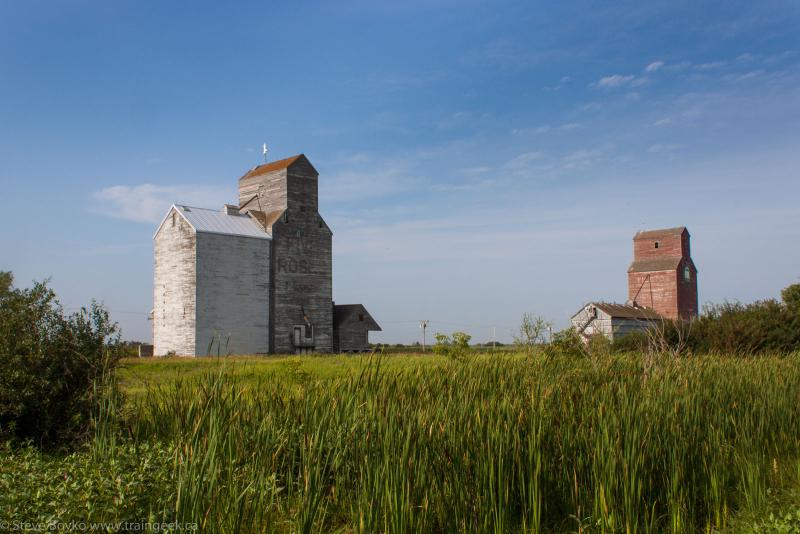

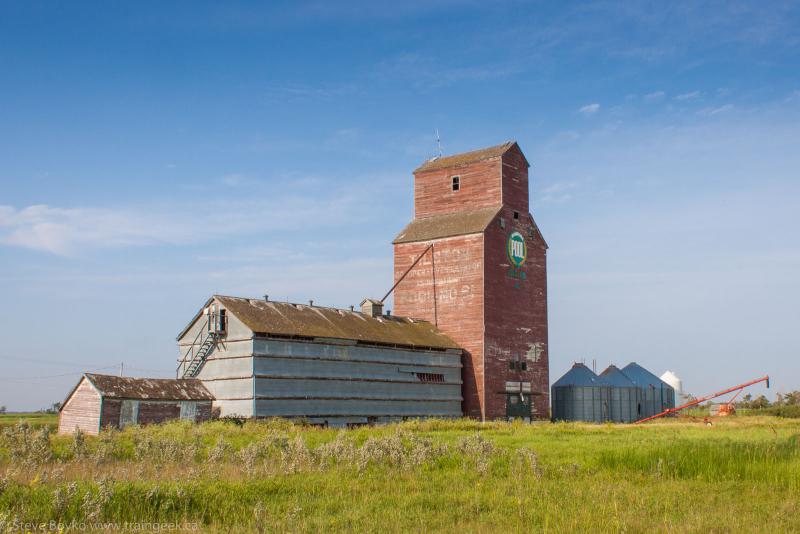
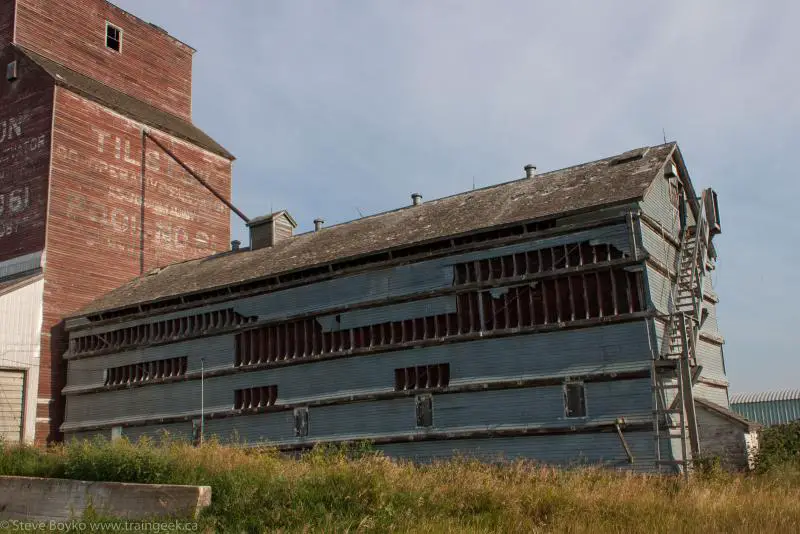
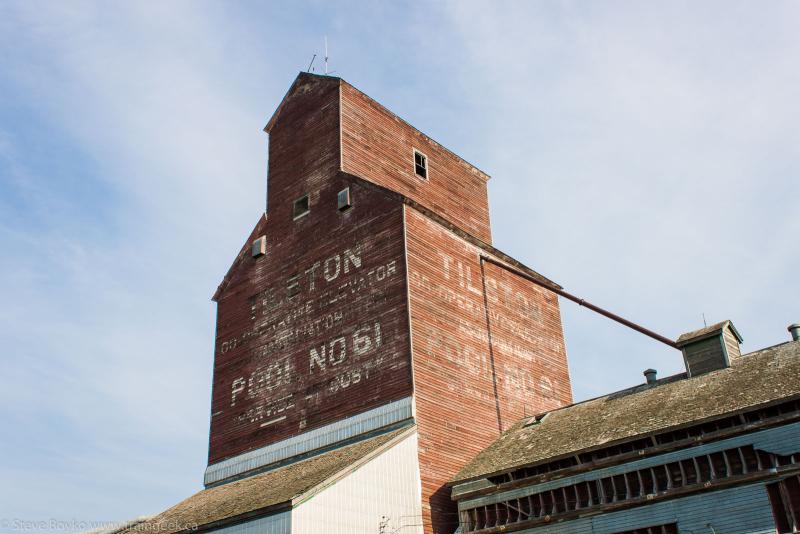
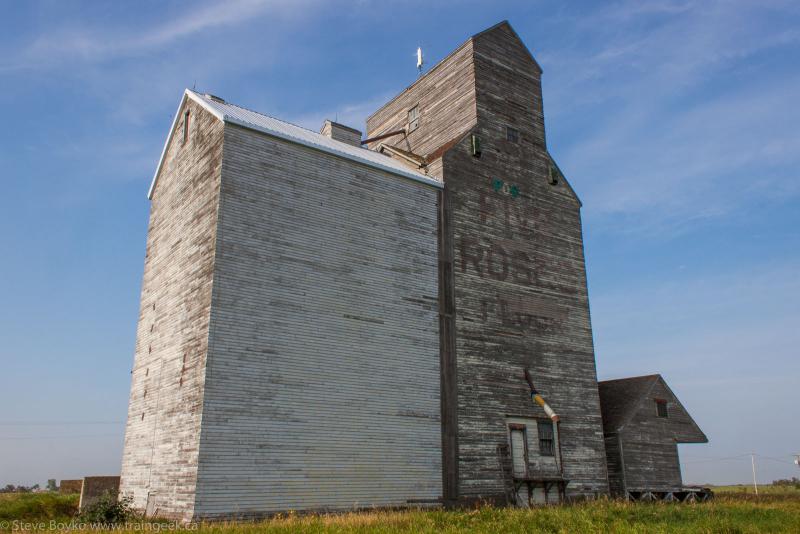

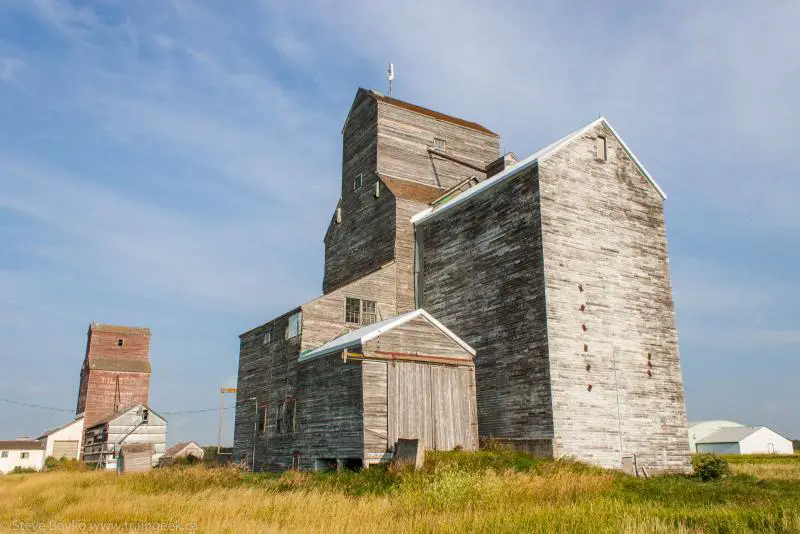
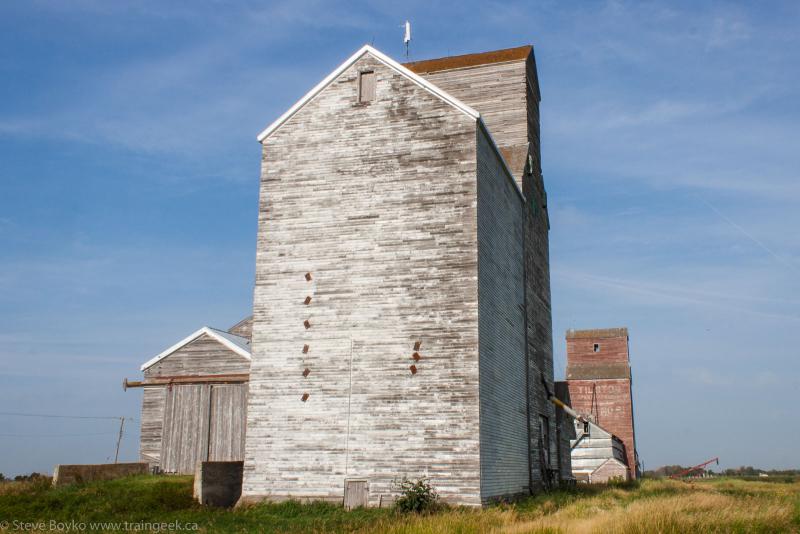
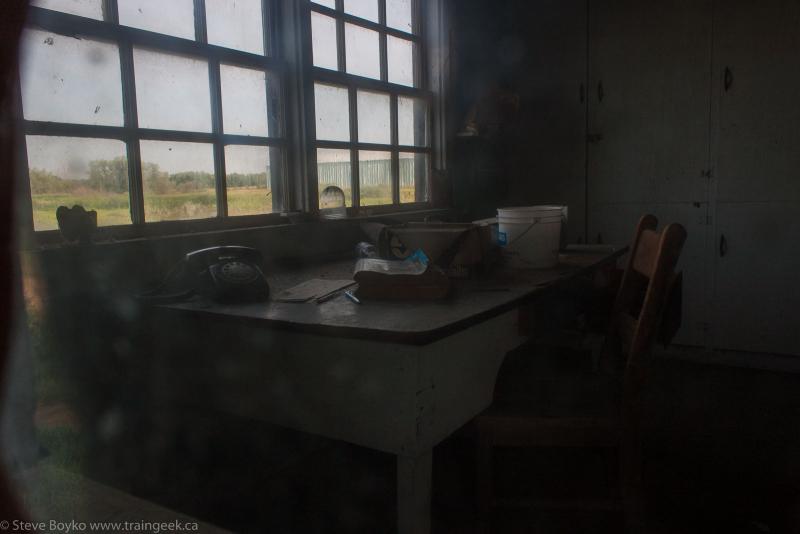






5 comments:
Hey Steve,
Loved the Tilston Elevators.
In regards to the bolts you see on the side of the elevator. I don't believe anything, building wise, was ever attached there. Those, for lack of a better word, would be similar in use to the 'Stay Bolts' that steam engines used to hold the boilers together under pressure.
If you had x ray vision, what I am guessing you would see, is a long, long, threaded rod that goes to the other side of the opposite wall, or another rigid attachment point, and is bolted on the other side as well. They are used in other free standing grain bins as well. Basically it keeps the sides of the building from bulging out under the weight and pressure of whatever is in there. They are used more for older buildings that have become weakened over the years.
That's my story and I'm stickin to it.
Cheers,
Busman
Loved that office shot inside the grain elevator.
I see they still have a black rotary phone like the one I still use.
Busman
Hi Busman, yes, I guess those are stay bolts. I posted it on the Vanishing Sentinels Facebook group and that was the consensus there too.
I had no idea that rotary phones still worked on the telephone system! They use pulse dialing and in some areas pulse dialing no longer works, just tone dialing.
The Busman is correct. Those nuts and washers are the ends of long tie rods that help keep the cribbing together. They are added at the weakest point in the structure (typically just at the point where the bin slope sheets meet the heavy timber suppoort beams. In the eleavtor proper, the weak point is in the same place, just baove the work floor where the bin bottoms rest on the timber beams.
Tilston used to be on CP's Alida subdivision. This line was never well kept and could only load boxcars. Neither the trcak nor elevators were upgraded to handle the haopper cars. In the spring of 1976 a rainstorm swelled the already full Souris River near Lauder MB and washed out the rail bridge. Since the line was not a money-maker, CP just gave up. They later hired a contractor to remove the tracks. This is where Cando Contracting got their start...ripping up the tracks on this line. There are still some ties left in the Tilston elevator track, but other than the elevators (and one near Alida, SK there is little evidence of the railway left. A similar fate befell Lyleton MB, when the Souris River flooded the bride near Coulter and CP gave up on the line west of Dalny, and eventually the whole line all the way back to Deloraine.
The church up the road from the elevators has the same interior rods
Post a Comment